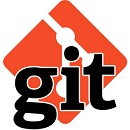Git: scan repositories for secrets using Gitleaks
16 August 2021A confidential data leak such as RDS keys or passwords to a Git repository, even if it is a private Github repository, is a very bad thing and it’s good to check your repositories to know if any developer pushed a commit with such data. Scanning utilities To check Git repositories for a leak, at… Read More »






